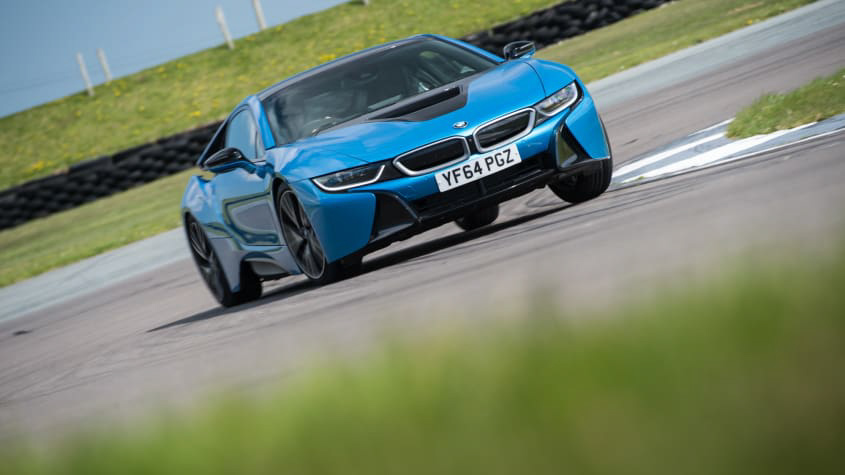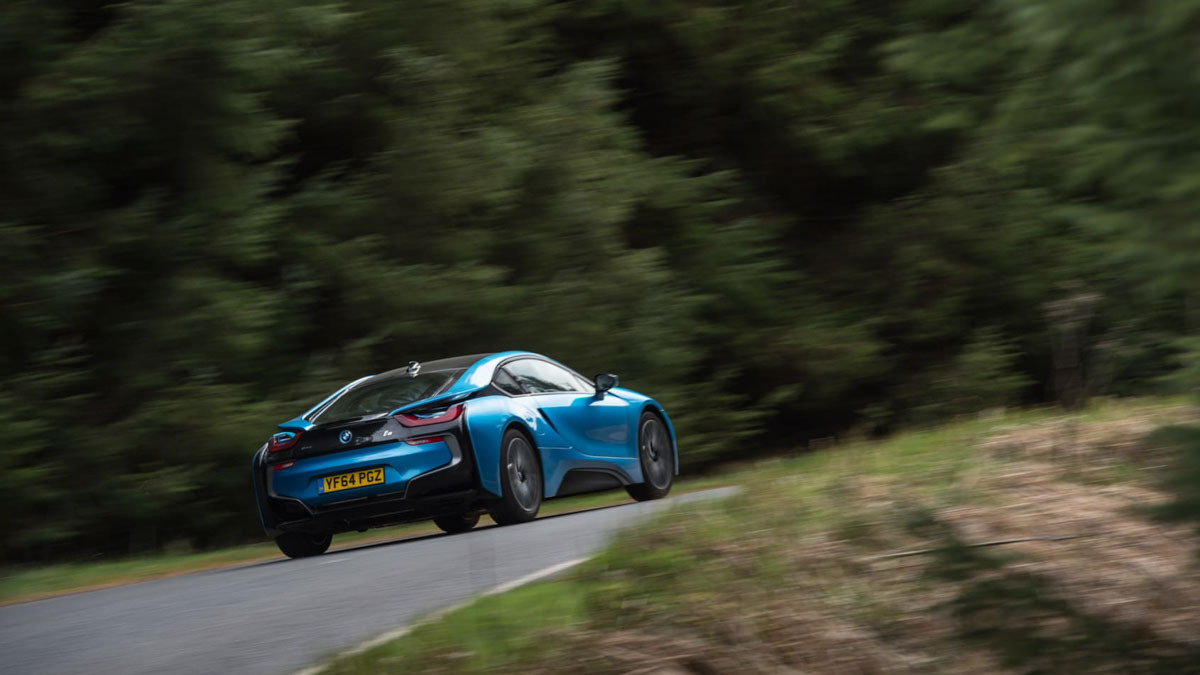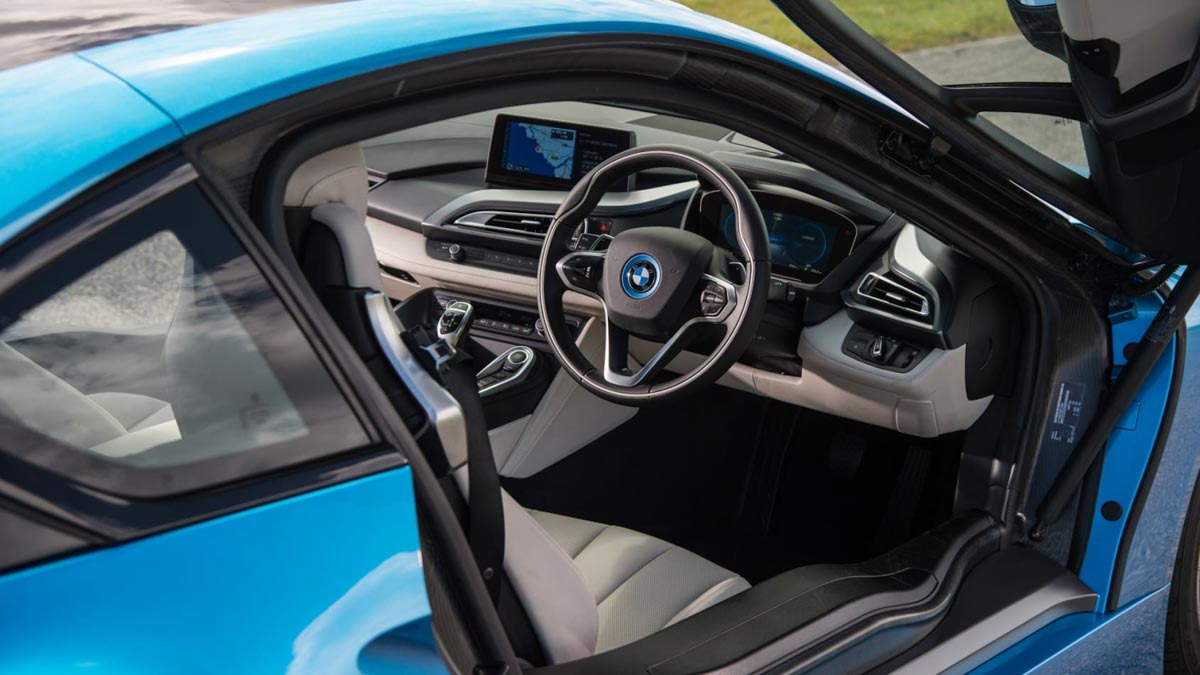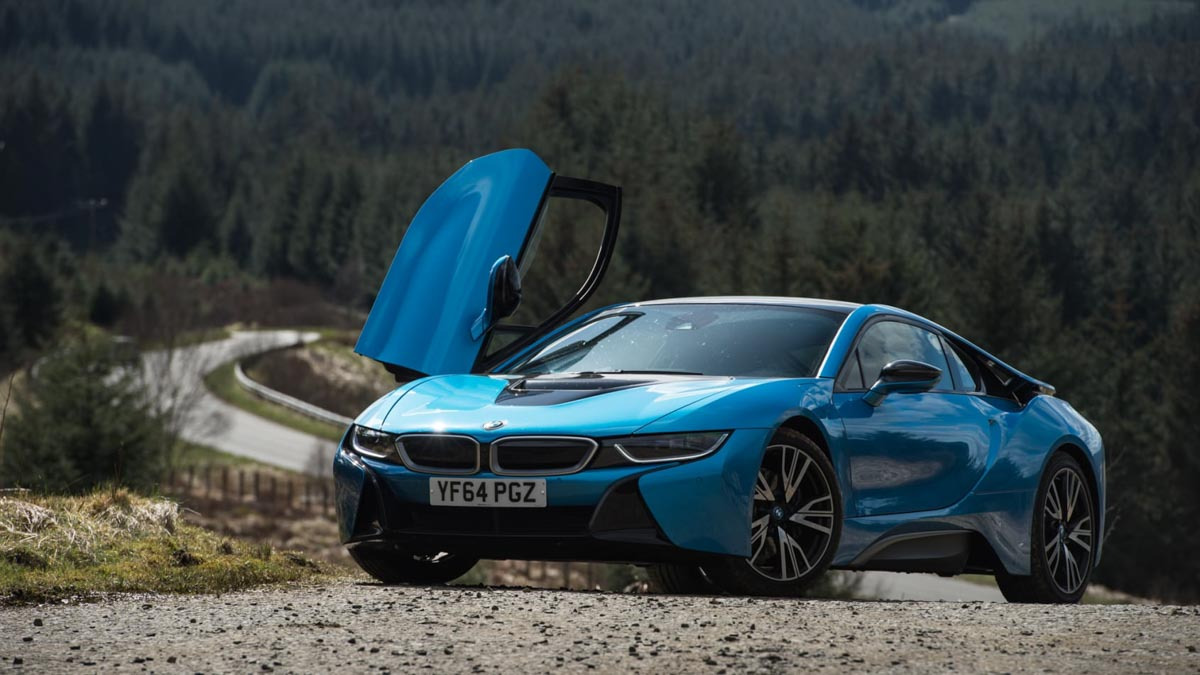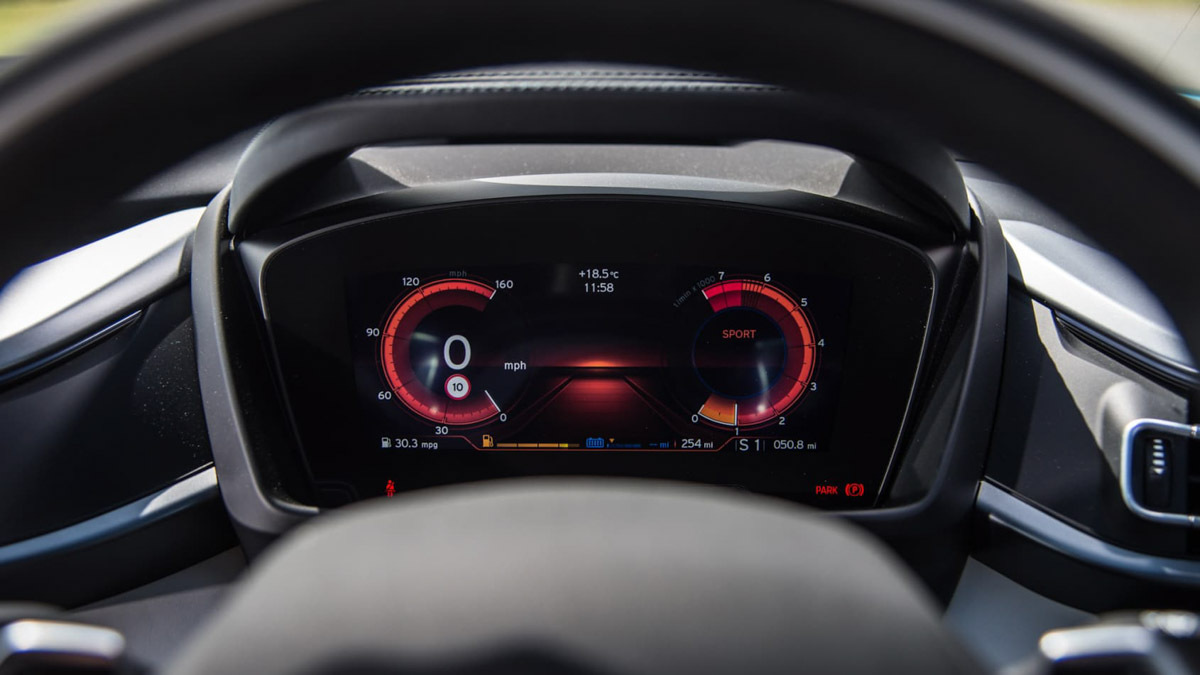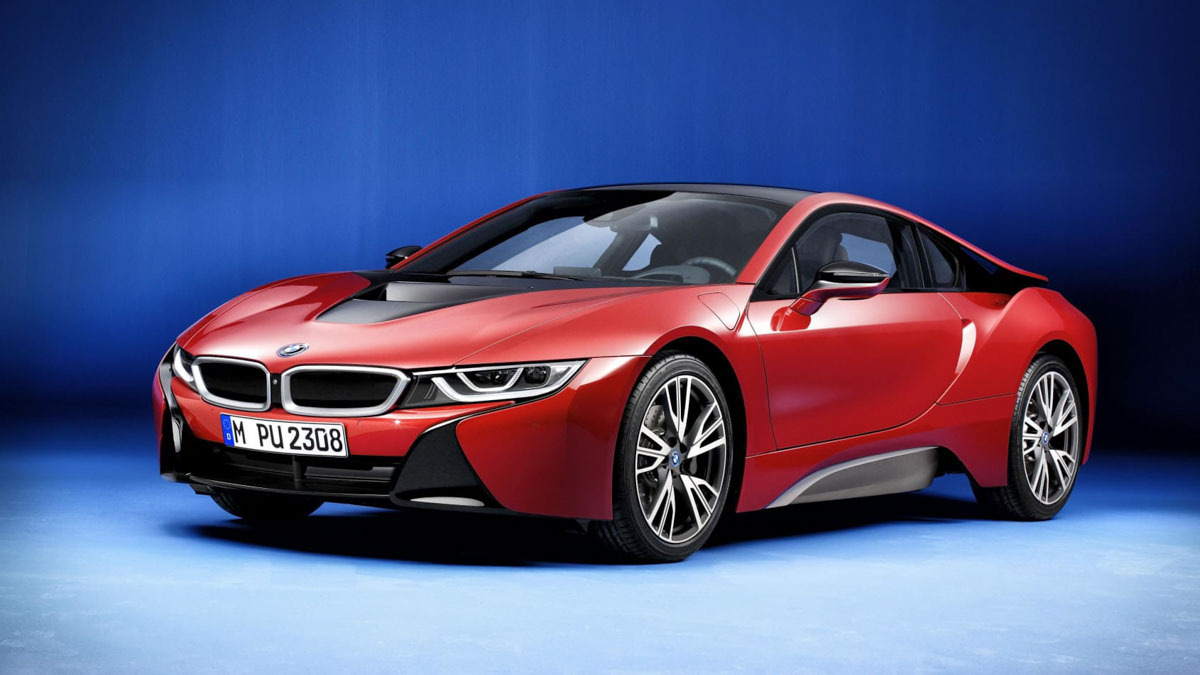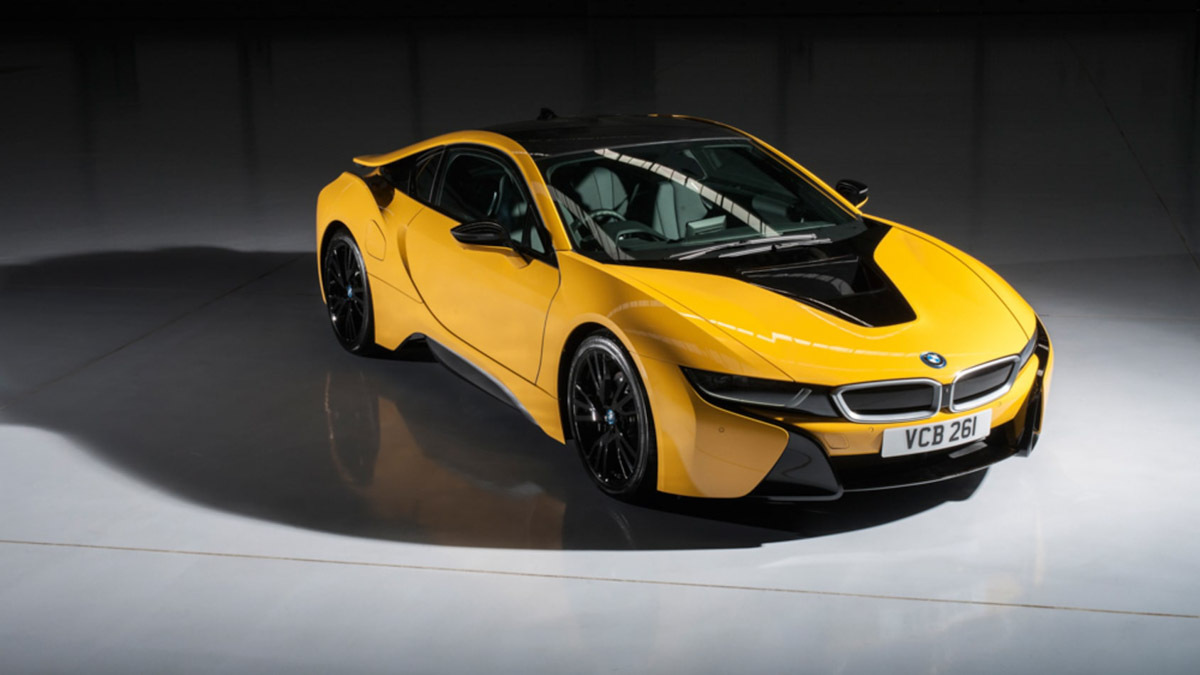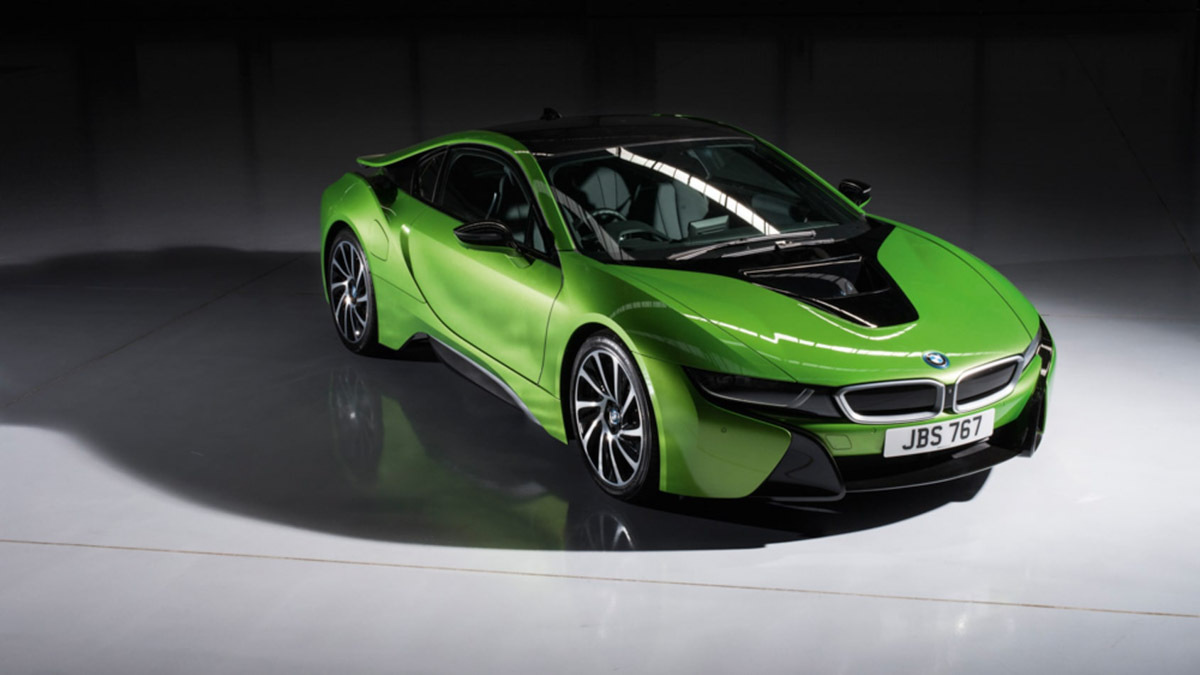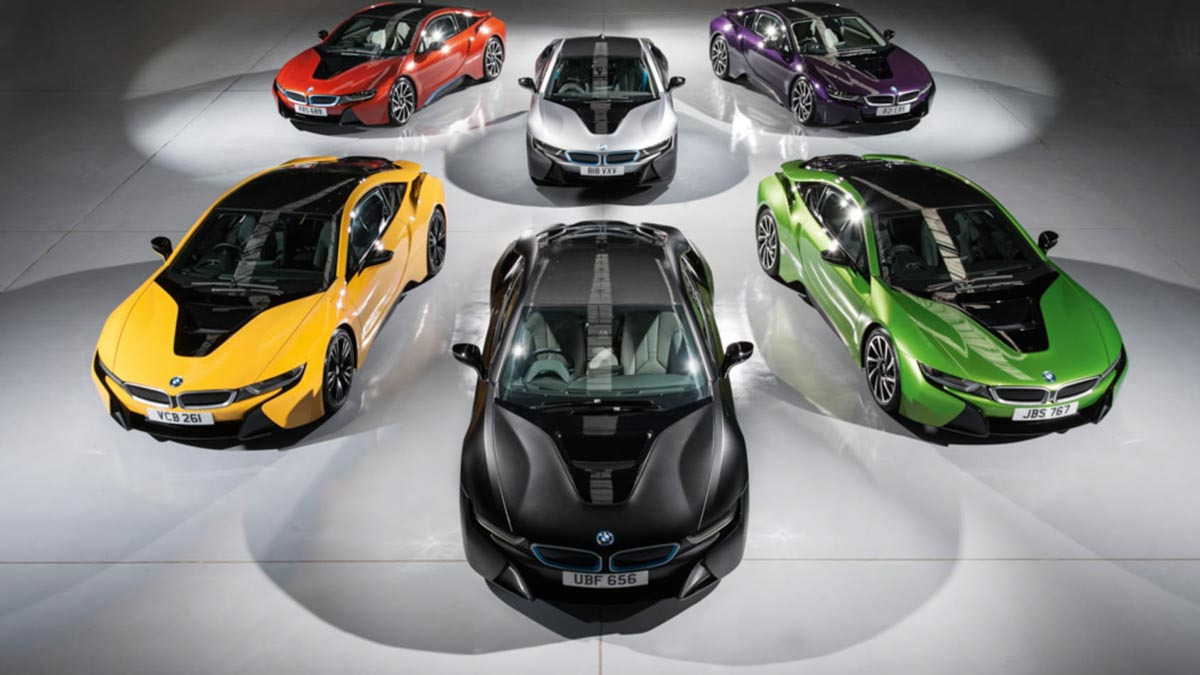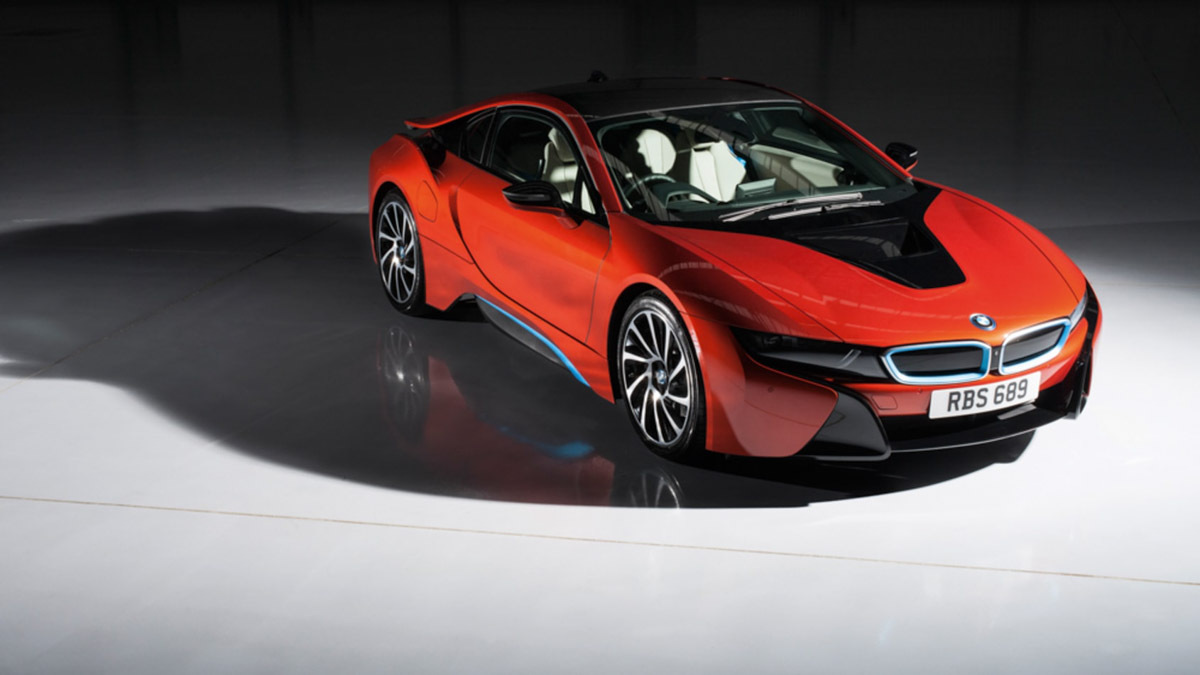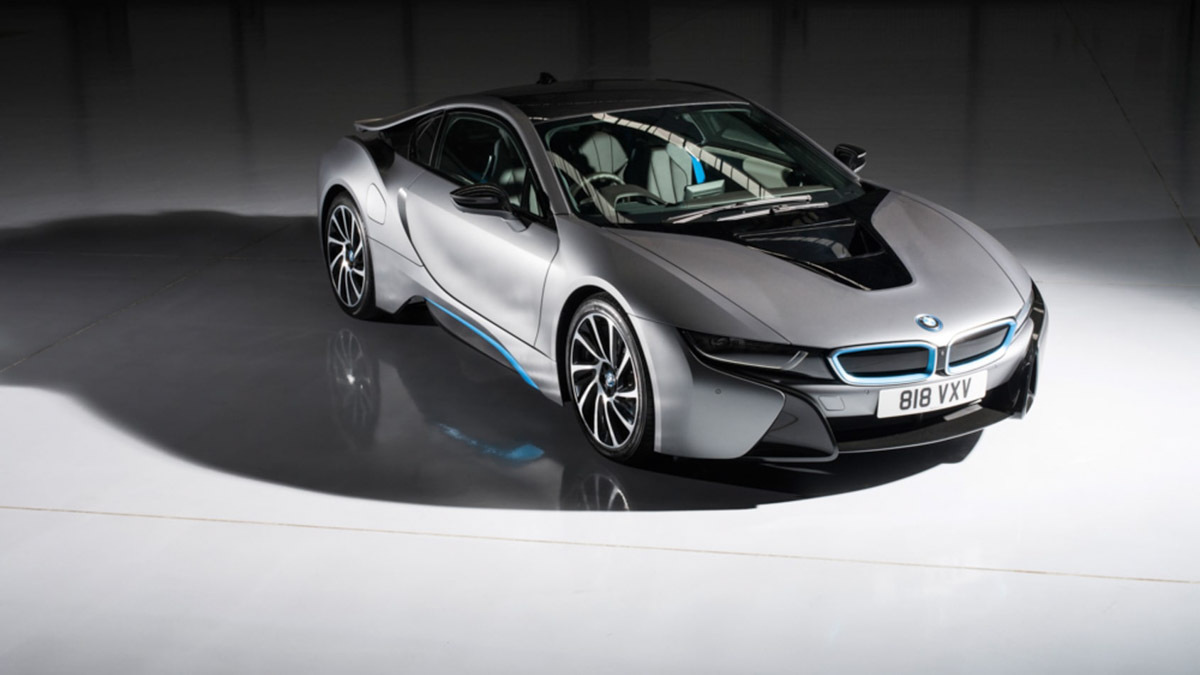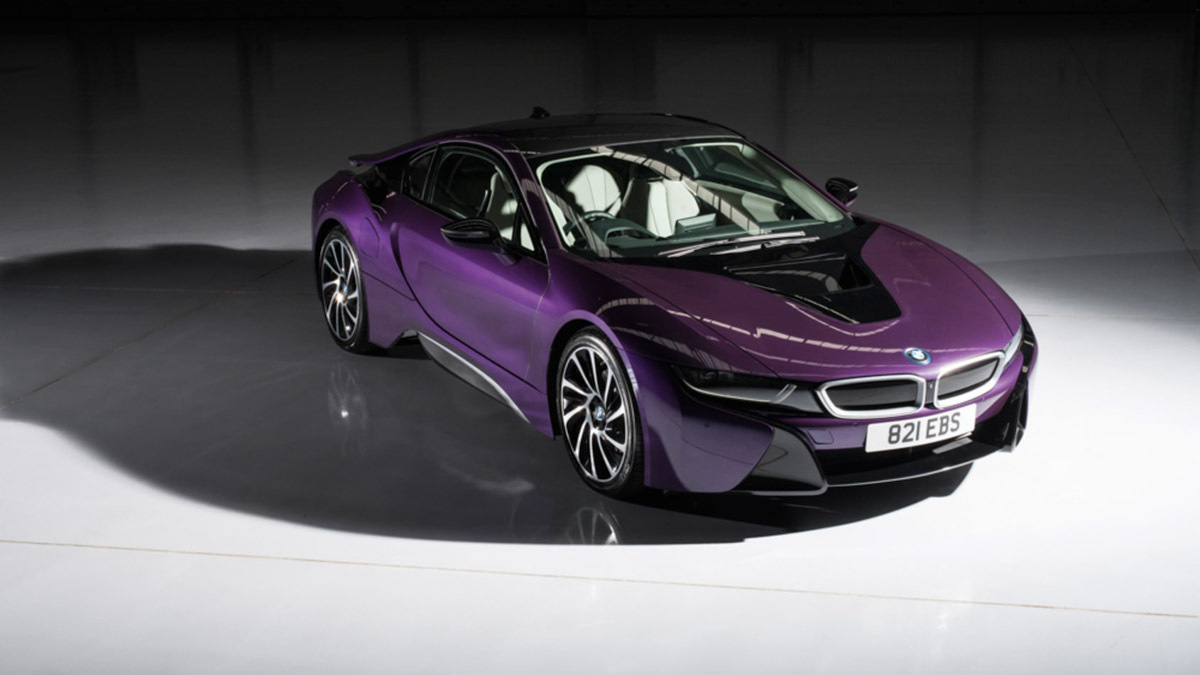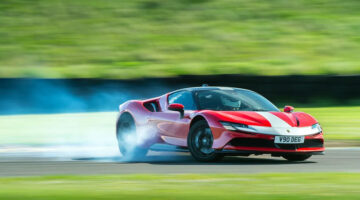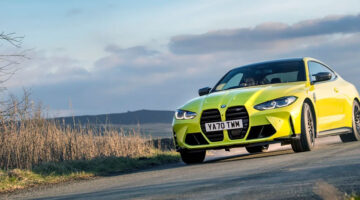Can BMW’s performance hybrid deliver conventional sports car thrills?
The BMW i8 is a new age sports car, but it proves that the basic tenets of involving handling, strong straight-line performance and eye-catching styling will always be central to the sports car proposition.
With its clever hybrid drivetrain, the i8 is very nearly as accelerative as a Porsche 911 Carrera, but it can also cover close to 32 kilometres in electric only mode, which makes it a unique offering at this price point. The drivetrain is certainly an impressive technological achievement and an object lesson in systems integration, but it lacks the emotional appeal of a soulful, high-revving engine and that will count against it among certain traditional sports car buyers.
Aside from slightly remote steering and a lack of outright grip across the front axle in hard cornering – a result of its narrow tyres – the i8 is genuinely fun to drive. It has superb body control and excellent balance.
The i8 turns heads like few others $120,000 sports cars, perhaps because it is the car of the moment. The cabin architecture is very seductive, but it’s something of a shame that all of the minor controls and the infotainment interface are lifted directly from the rest of the BMW range.
Prices, specs and rivals
Unlike many models in the $120,000 price range, the i8 sports gets almost all of the kit you’d ever need as standard. Models such as the Porsche 911 may require you to add thousands onto the base price to get what you desire, but specifying the Bavarian hybrid shouldn’t drive the price too far north of the $128,000 entry point.
Earlier last year at the Frankfurt Motor Show, BMW revealed an open top roadster variant of the i8. The removal of its roof comes with the addition of cost however, with the roadster starting at almost $150,000.
There isn’t an awful lot of customisation permitted when configuring the i8, with just five two tone finishes available, each hue contrasting with either Frozen Grey or BMW i Blue accents. Sophisto Grey is a no cost addition, while Iconic Silver coming in at $550 and Crystal White with blue/white accents the most expensive, at $1650. Other than the standard five spoke wheels, you can choose from two other 20 inch options at $1800.
Ducking under the scissor doors presents an interior befitting the futuristic exterior. There are three interior ‘worlds’, each upholstering the cabin with different materials. At $1085 the Harman Kardon stereo upgrade would be beneficial to those who’ll be travelling under the sole, serene steam of the electric motor more often than not.
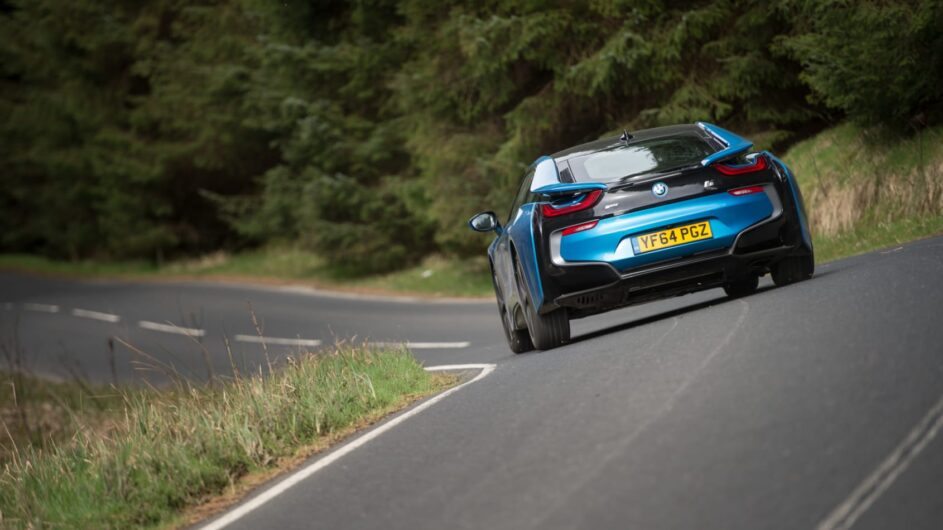
Other than that, the options list is mostly confined to small interior styling tweaks or minor upgrades to the infotainment system – there really is just about everything you could realistically want. The extensive suit of technological functions and amenities includes heated seats, climate control, a heads up display, keyless entry with BMW’s smart key, and the iDrive infotainment integrating the navigation system.
Most of the above is controlled via iDrive, one of our favourite infotainment systems and offers all the features you could want, accessed via the BMW’s high resolution screens in the binnacle and atop the dash. The options list does offer extras such as web browsing, which are reasonably priced but largely useless.
Slotting the BMW i8 into a performance car segment is difficult, hence defining its rivals is too. The closest rival we can think of to the i8 is a well lavished Porsche 911 Carrera 4 GTS. Also just eclipsing six figures and offering 430bhp from a naturally aspirated flat six, it’s a very exciting thing. Dynamically, it may also be better, but no amount of bright Guards Red paint turns heads like an i8.
A fellow hybrid supercar, and technological tour de force, the all-wheel drive NSX carries a $36k premium and flaunts the same supercar panache as the i8, although it’s performance perhaps elevates the Honda out of the i8’s territory. Tesla’s P100D, which undercuts the Japanese supercar by a few thousand pounds offers stratospheric straight line performance purely under electric power – oddly addictive, it’s a wholly different proposition but one that shouldn’t be discounted.
Watch an i8 square up to a 911 Carrera GTS here
Alternatively, you have the Tesla Model S P90D. This is a very different car to the i8; larger, heavier and altogether more ‘executive’. In pure acceleration terms it’s mighty, but falls short of the BMW when it comes to driver involvement.
Performance and 0-60 times
The i8’s performance is quite frankly astonishing for a car with a three-cylinder engine. The combination of a 227bhp petrol engine and a 129bhp electric motor means it can deliver an M3-rivalling 0-100kph time of 4.4 seconds.
The combined hybrid system also generates 420lb ft of torque with the electric motor generating the entirety of its shove immediately. That means that the i8 actually ends up feeling a bit quicker than it reads on paper.
>Read about the Tesla Model S P100D
What’s most impressive with the performance of the i8 is how the two systems work together to create a very clever four-wheel drive setup. The electric motor drives the front axle, while the petrol drives the rear. They both fill in for each other, with the electric motor providing power at the lower end of the rev range and the turbo three-cylinder unit filling in at the top.
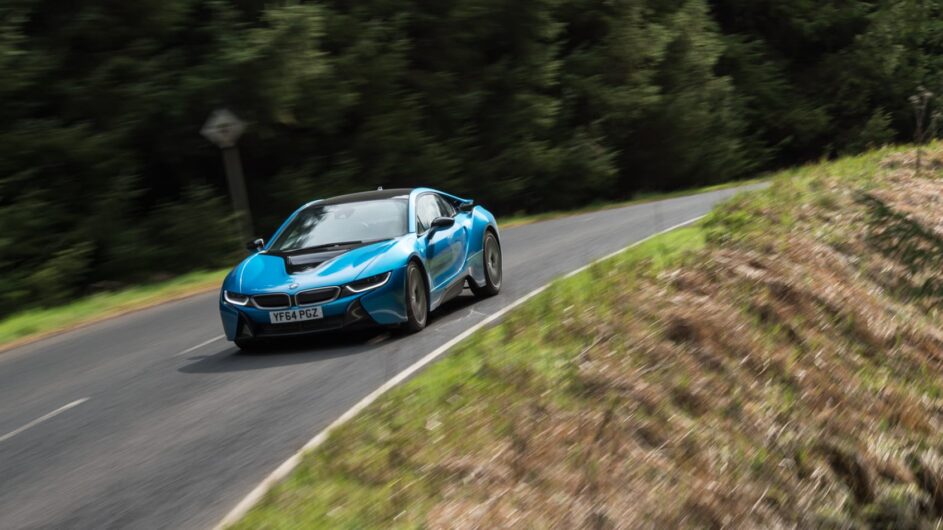
This distribution of the drivetrain also helps translate to a perfect 50/50 weight distribution. As for the i8’s weight itself, the car manages 1485kg despite its 7.1 kWh lithium-ion battery. This is thanks to its clever hybrid carbon-fibre/aluminium structure, which saves weight, keeps occupants safe and is nowhere near as expensive as a full carbon-fibre tub.
BMW’s TwinPower 1.5-litre three-cylinder delivers a soundtrack that does the i8’s looks justice. Obviously a large part of that comes from cleverly synthesised audio work, but in a car as ‘digital first’ as the i8, it’s more forgivable than in the likes of the M3 and M4. Just don’t open the windows in a tunnel and expect your ears to be blown off, as a lot of the noise the i8 makes is a cabin-only affair.
Engine and gearbox
While BMW won’t thank us for saying so, the three-cylinder TwinPower 1.5-litre engine in the i8 is essentially a heavily reworked version of the unit found in the base-model Mini Cooper.
We say reworked, because it generates 228bhp and 236lb ft of torque. This is then combined with an electric motor on the front axle, which produces 129bhp and 184lb ft.
As if the powertrain wasn’t complicated enough, 11bhp of hybrid drivetrain is generated by the starter motor, which also serves to torque-fill where the petrol engine is still spooling up its turbo.
The complicated drivetrain demanded an equally ingenious transmission. Essentially, power from the petrol engine is transferred to the rear-wheels using a six-speed auto and the front handles the electric motor using a two-stage automatic box. The driver controls the six-speed either by leaving it in auto mode or via the shift paddles on the steering wheel.
In Eco mode, the gearbox does as you’d expect, shifting up at just the right moment to achieve maximum efficiency. Switch to Sport however and it’ll hold gears a lot longer. Shifts aren’t double-clutch gearbox quick, but they’re more than fast enough.
Ride and handling
BMW makes a great deal of noise about the i8’s ecological credentials, so it almost comes as a surprise to learn that it’s genuinely fun and engaging to drive quickly. It has better body control over a cresting, undulating road than any of BMW’s high performance M cars and it feels agile, darty and poised in corners. The hybrid drivetrain also gives it serious straight line performance – enough to keep up with a Porsche 911 Carrera S until 160kph.
Its dynamic weaknesses are the steering, which feels remote and lifeless, and the ultimate lack of grip across the front axle. You’d need to be pushing hard on the road to provoke that understeer, but it’s very prominent on the circuit. Both of those things mean that the i8 falls a little way short of conventional rivals such as the Porsche 911 and Mercedes-AMG GT for outright thrills – but it is better to drive than we imagined it would be.
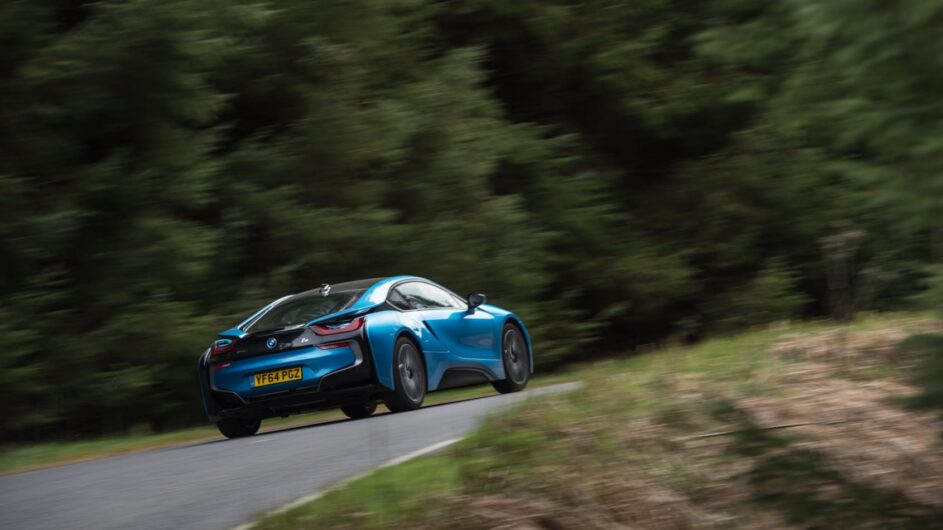
That being said, we do have issues with the brake pedal feel. The i8 uses regenerative braking to help recharge the batteries. This means that the car switches between its two brake systems during a braking manoeuvre, which gives an inconsistent pedal feel.
In everyday driving, the i8 is refined, it rides comfortably for a car of such performance and there are no histrionics from the complex drivetrain around town. When in electric-only mode it has enough straight-line performance to dismiss most traffic away from the lights, all without making anything more than a distant hum.
evo Comment
‘The i8’s batteries are located low in the chassis and within the wheelbase, which gives it perfect natural balance. It also has better body control over a tricky road than any of BMW’s high-performance M cars. In fact, there is so much untapped potential here that an M version would surely be something very special indeed.
‘As it is, the i8 is let down slightly by its vague steering and low rolling resistance tyres, but that’s only in extreme cornering. For the most part the i8 is a very convincing machine that augers well for the future of the sports car.’ Dan Prosser, road test editor
L/100km and Running Costs
As you’d expect, the i8 is an emissions focused car. It’s possible to run it completely on electricity for 35 kilometres at speeds up to 120kph, or alternatively, use the combination of the two power sources while the car is set to EcoPro mode to achieve a 530-kilometre total range.
Fuel consumption is a claimed 2.1L/100km, but don’t expect to see that in real world usage – somewhere between 8-7L/100km in normal use is much more realistic. Emissions of 49g/km mean it’s no longer exempt from both congestion charge and VED since the introduction of new VED regulations in April 2017.
The bottom line is, the i8 is going to be more efficient in day-to-day use than virtually every other conventionally powered car in its class, but unless you spend much of your time running around using the i8’s battery power alone, those claimed economy figures are fanciful at best. As such, the i8 makes most sense, economically and practically, when the owner can regularly charge it – perhaps at home and at work.
evo Tip
The key to getting the most out of the i8 is being able to charge via a mains socket regularly, in which case it can be run in its electric-only mode for shorter journeys without burning fuel.
Over longer journeys, the i8’s fuel economy figures falls in line with that of a conventional car, although it will prove to be more fuel efficient than a Porsche 911 long term. We’ve averaged around 7L/100km when we’ve tested various i8s.
Interior and tech
BMW likes to describe the i8’s interior as if it’s a Scandinavian’s living room. Interior options are described as ‘worlds’, which is clever marketing speak for ‘we’ve done something unusual’.
Dihedral doors kick off the i8’s interior experience, with high sills from the carbon fibre reinforced plastic tub making ingress and egress a little difficult. A large transmission tunnel seperates driver and passenger, but strangely despite its size, there is very little cubby or storage space. Rear seats are usable although only for younger passengers.
One of the issues we’ve always had with the i8 relates to its start up sound. For some reason BMW opted to use a scratchy low-res sound sample when you hit the engine start button. As the car normally starts in pure electric mode, it’s merely there to emphasise the fact that you’ve actually switched it on as the motor is so quiet. The problem is the low-res noise just breaks an otherwise premium experience.
The rest of the interior, although eco-friendly, doesn’t do a huge deal to up the ante over say a top spec BMW 5-series. It just doesn’t feel anywhere near as special as the car looks from the outside. The materials used also aren’t as premium to the touch as the less environmentally sound stuff you would find in other top-spec German cars.
Then there is iDrive itself and the LED display behind the dash. Given the incredible work that Audi has done with the TT, it’s a little disappointing to see BMW hasn’t worked quite the same levels of magic with the dash and infotainment in a car already as special as the i8 – they work brilliantly, but they’re really no different to what you’d find in the rest of BMW’s range.
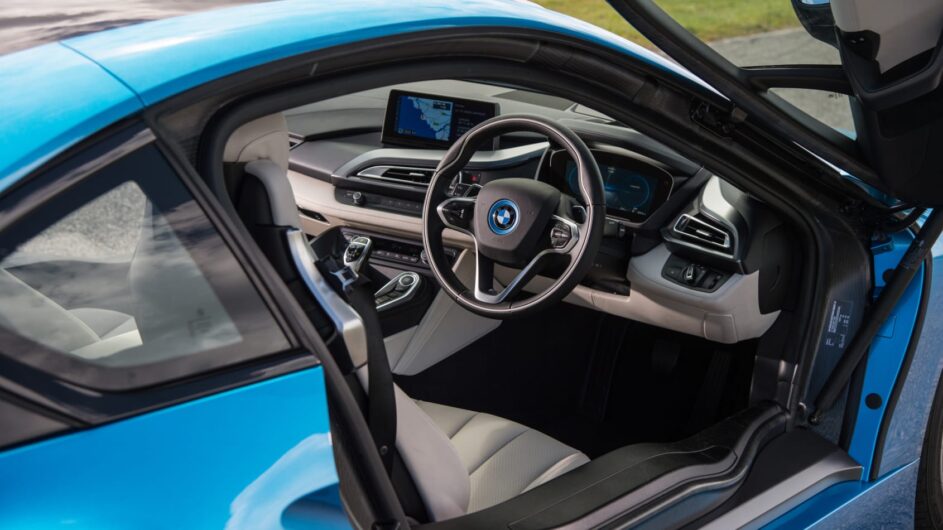
BMW more than makes up for this slightly uninventive use of iDrive with its implementation of apps and smartwatch control. Those who own an Apple Watch will find they can now control the i8 from their wrist. You can track the location of your car, see its eco stats, or lock and unlock it. It’s also possible to flash the headlights to help you find it in a car park.
The iPhone takes this one step further, letting you compare your eco driving against other i8 owners. It also offers tips on driving style to help further increase the L/100km on your car. All in all, it’s a hugely impressive package that is the icing on the cake for a car that feels as cutting-edge as it gets.
The i8 seems to be the perfect platform for experimentation, however – the i Vision future interaction concept presented at the Consumer Electronics Show in January used the i8 platform to showcase autonomous driving capabilities, gesture control and cloud-based tech.
At the same event, BMW presented a mirrorless version, which replaced traditional rear-vision mirrors with cameras and screens. The aim is to eliminate blind spots – often a particular issue with sports cars like the i8 – and improve aerodynamic efficiency. With small cameras out on stalks rather than mirror units, BMW claims a three per cent improvement in aero efficiency.
Design
BMW has done a stellar job with the i8’s design. Perhaps one of the few cars to ever truly live up to its concept, there is nothing else on the road quite like it.
For starters, there are the distinctive ‘U’ shaped daytime running lights, which immediately make the i8 stand out. Really though, it’s the complexity of the body panels, combined with the black belt that runs right down the centre of the car, which is most impressive.
At the back you have a pair of flying buttresses which sit above the brake lights. These then wrap around to the front of the car and spread out wide across the bonnet, giving the i8 a wide and low down road presence.
Then there is the distinctive BMW kindey grilles, albeit this time they aren’t grilles at all, instead pieces of gloss black plastic framed by blue accents. This theme of blue continues throughout the car, but never is it used to excess, instead accentuating design features and leading your eye to them.
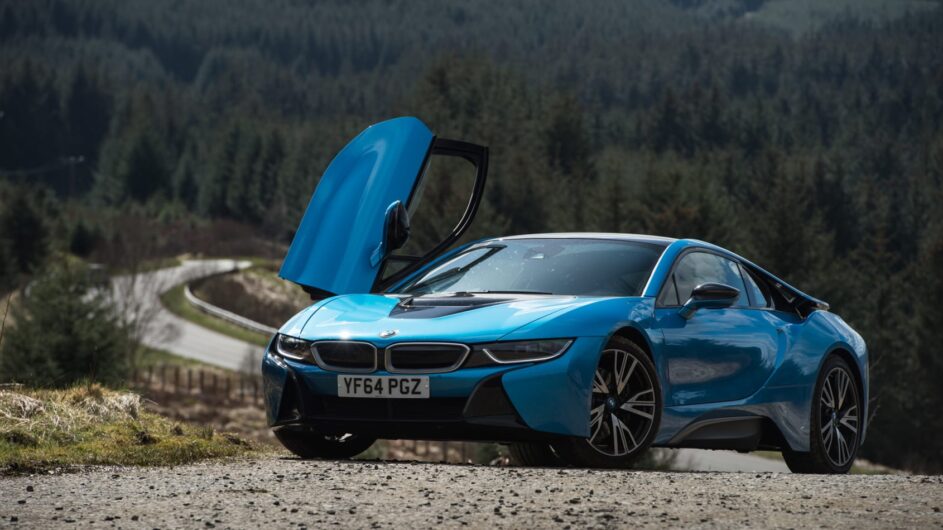
Of course there are the scissor doors also, which just adds to the drama and theatre of the i8. In fact, its design really is almost impossible to fault, purely because it’s so ambitious.
The only issue we have really is the 215/45 rear tyres do slightly make the car look like it’s standing on stilts. Really though, there isn’t a single car on market right now we can think of that will turn heads like the i8.
BMW recently announced a new Protonic Red limited edition version of the i8. We’re not entirely sure the red colour scheme – echoed on double-stitching throughout the car’s cabin – entirely suits the i8, which otherwise retains the standard car’s plug-in hybrid drivetrain.
This article originally appeared at evo.co.uk
Copyright © evo UK, Dennis Publishing

